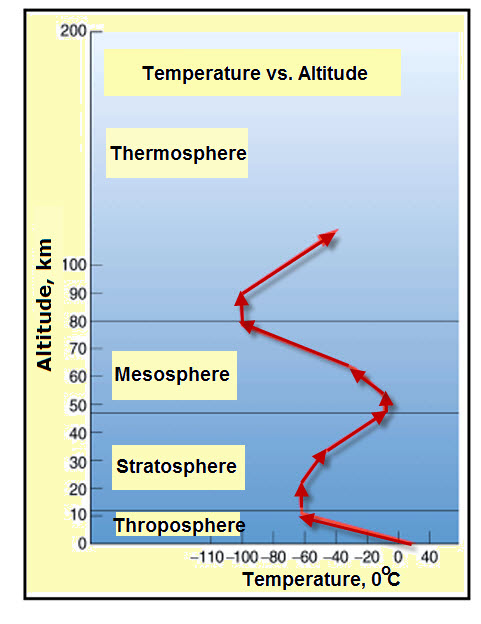Earth’s Atmosphere can be divided into four layers with distinct changes in temperature as the altitude increases. Starting at Earth’s surface, these layers are:

Troposphere: As the altitude increases, the air temperature decreases.
The troposphere is hotter near the Earth’s surface because heat from the Earth warms this air. As the altitude increases the number of air molecules decreases, thus the average of their kinetic energy decreases. The results is a decrease in air temperature with an increase of altitude.
Stratosphere: As the altitude increases, the air temperature increases.
The Stratosphere has a layer of ozone, called the ozone layer. This layer absorbs most of the ultraviolet radiation from sunlight. This results in the stratosphere being warmer.
Mesosphere: As the altitude increases, the air temperature decreases.
The Mesosphere, like the troposphere layer, has a decrease in temperature with altitude because of the decreases in the density of the air molecules.
Thermosphere: As the altitude increases, the air temperature increases.
Science experiments that make learning about our Earth fun as well as informative.
(Paid Link)
